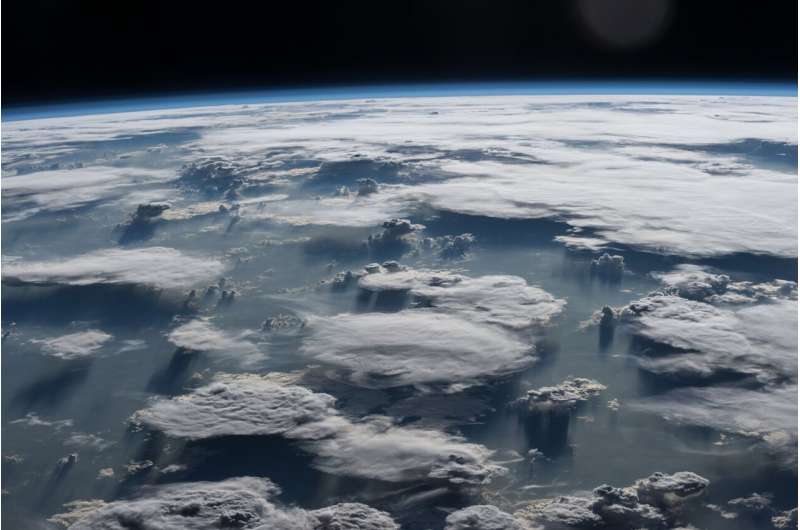This article has been reviewed according to Science X's editorial process and policies. Editors have highlighted the following attributes while ensuring the content's credibility:
fact-checked
peer-reviewed publication
trusted source
proofread
Simple equations clarify cloud climate conundrum

A new analysis based on simple equations has reduced uncertainty about how clouds will affect future climate change.
Clouds have two main effects on global temperature—cooling the planet by reflecting sunlight, and warming it by acting as insulation for Earth's radiation. The impact of clouds is the largest area of uncertainty in global warming predictions.
In the new study, researchers from the University of Exeter and the Laboratoire de Météorologie Dynamique in Paris created a model that predicts how changes in the surface area of anvil clouds (storm clouds common in the tropics) will affect global warming.
By testing their model against observations of how clouds impact warming in the present day, they confirmed its effectiveness and thereby reduced uncertainty in climate predictions.
The model shows that changes in the area of anvil clouds have a much weaker impact on global warming than previously thought. However, the brightness of clouds (determined by their thickness) remains understudied, and is therefore one of the largest obstacles to predicting future global warming.
"Climate change is complex, but sometimes we can answer key questions in a very simple way," said lead author Brett McKim.
"In this case, we simplified clouds into basic characteristics: either high or low, their size and the temperature," McKim explained. "Doing this allowed us to write equations and create a model that could be tested against observed clouds."
"Our results more than halve uncertainty about the impact of the surface area of anvil clouds on warming.
"That's a big step—potentially equivalent to several years' difference in when we expect to reach thresholds such as the 2°C limit set by the Paris Agreement.
"We now need to investigate how warming will affect the brightness of clouds. That's the next stage of our research."
The paper, published in the journal Nature Geoscience, is titled, "Weak anvil cloud area feedback suggested by physical and observational constraints."
More information: Weak anvil cloud area feedback suggested by physical and observational constraints, Nature Geoscience (2024). DOI: 10.1038/s41561-024-01414-4
Journal information: Nature Geoscience
Provided by University of Exeter




















